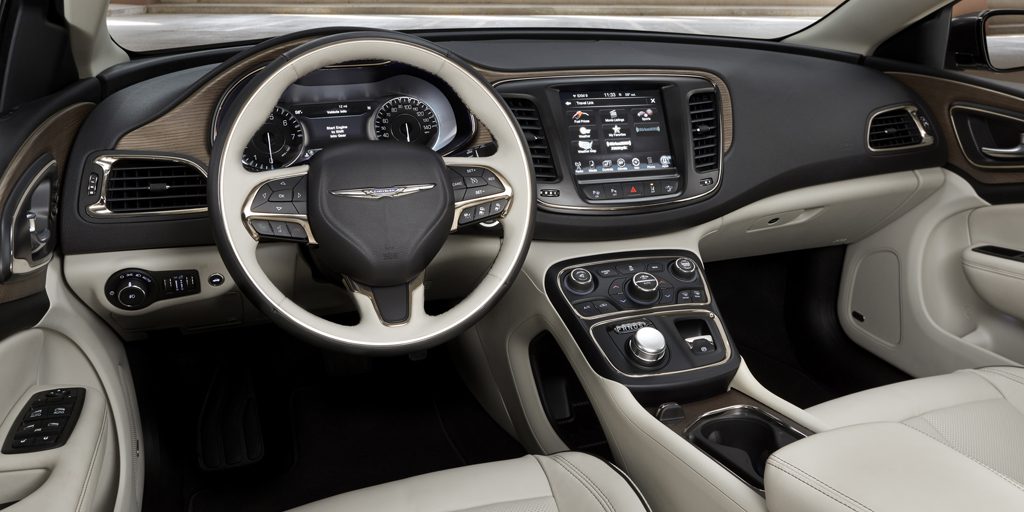| Midsize SUV; Built in |
|
|
| Good condition price range: $10,200 – $15,000* |

2015 Chrysler 200

2015 Chrysler 200

2015 Chrysler 200

2015 Chrysler 200
| Pros: |
|
| Cons: |
|
So the 200’s report card is a good one, if not an A+. The 200 makes its mark with available all-wheel drive, a rich-looking interior, impressive cabin storage, and a strong array of features. You can find more rear-seat space in a Honda Accord, Nissan Altima, or Toyota Camry, but the 200 matches or trumps those cars by most other measures.
The redesigned for 2015 Chrysler 200 had a number of things going for it that the outgoing model didn’t. Yes, it’s subjective, but it was hard to argue that the new car wasn’t better looking. And that went double for the interior. The 200 offered all-wheel drive that most of the 200’s competitors didn’t have. On both the safety and infotainment front, the new 200 offered many features that weren’t previously available, some that were exclusive to the segment. A 4-door sedan was the lone body style; the 2-door convertible had been discontinued.
The 200’s base engine was a 184-horsepower 2.4-liter 4-cylinder mated to a segment-first 9-speed automatic – standard. Also linked with the 9-speed was the up level engine, a 295-horsepower 3.6-liter V6 – the most powerful in the segment in 2015.
Trim levels included the base LX, well-equipped Limited, sport-themed S, and luxury/performance C. All models except the base LX came standard with Chrysler’s Uconnect media interface and an 8.4-inch touch screen monitor.
Standard LX features included the 9-speed automatic, air, keyless entry and starting, power windows, 6-way front seats, steering-wheel mounted audio controls, and 17-inch steel wheels.
Limited added UConnect 5.0, Bluetooth wireless cell-phone link, a compass, and 17-inch aluminum wheels. Options included a sunroof, satellite radio, and 18-inch wheels.
The 200S was aimed at (according to Chrysler) a “more sinister style and sportier driving experience,” and included black cloth upholstery, an 8-way power driver seat, paddle shifters, power heated mirrors, black interior and exterior accents, sport suspension, and 18-inch aluminum wheels. Options included the 3.6-liter V6, all-wheel drive, sunroof, navigation system, and 19-inch wheels.
Standard on the top-line 200C were leather upholstery, heated front seats, rearview camera, remote start, dual-zone automatic climate control, universal garage-door opener, touring suspension, and 17-inch aluminum wheels. Optional were the 3.6-liter V6, all-wheel drive, navigation system, and 19-inch aluminum wheels.
Also offered was a SafetyTec Package, which consisted of rain-sensing wipers, lane departure warning with lane-keep assist, automatic high-beam control, forward collision warning, adaptive cruise control with stop-and-go feature, blind-spot alert, cross-traffic alert, and the class-exclusive parallel and perpendicular park assist.
The 2015 Chrysler 200 was a vast improvement over its predecessor; counting rakish looks, a nicely finished interior, up-to-the-minute infotainment features, and a broad model lineup among its strengths.
